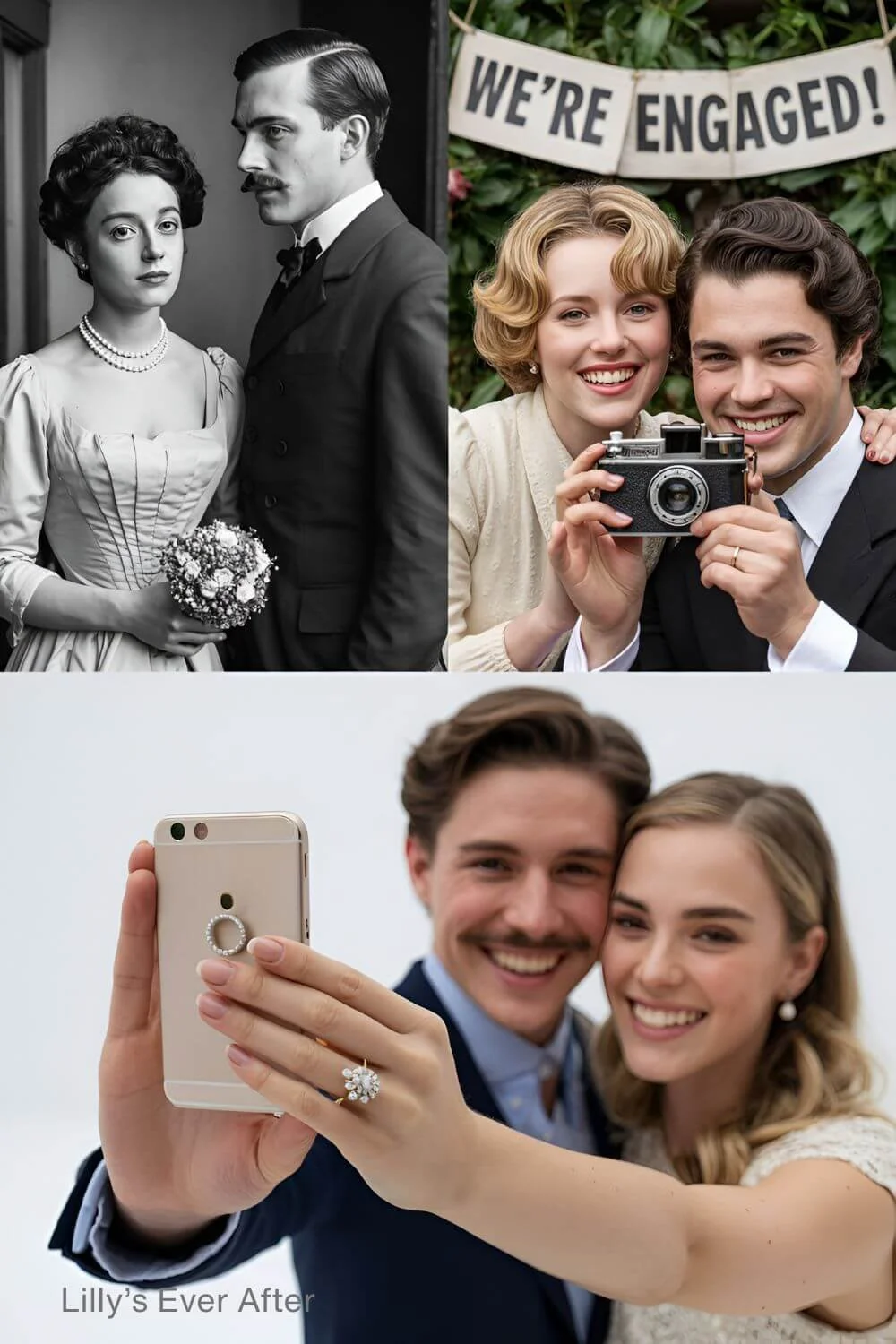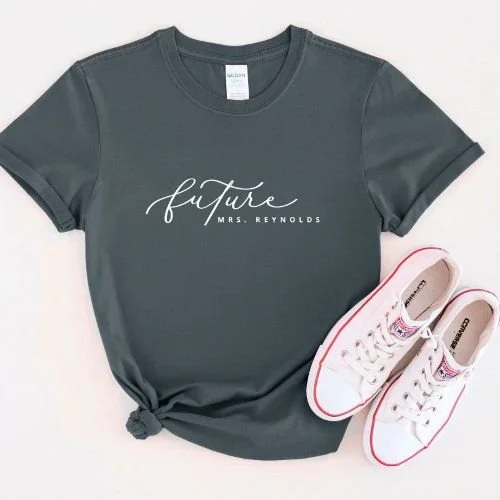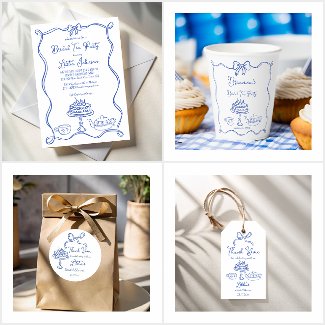What Is the Typical Duration of an Engagement?
Disclosure: Some links may be affiliate links, but we only recommend products and services we personally believe in.
The average couple's journey from proposal to wedding day can be a complex and varied experience. In the United States, the typical duration of an engagement is a topic of much interest.
Did you know that the average engagement length in the U.S. is between 12 and 18 months? According to Diane Gottsman, author of Modern Etiquette for a Better Life, "There's no one rule when it comes to an engagement length." This flexibility allows couples to plan their special day according to their unique needs and circumstances, ultimately leading to a memorable wedding celebration.
Couples can expect a range of factors to influence their wedding planning timeline. Understanding these elements can help in planning a stress-free and enjoyable experience.
The Average Engagement Length in the United States
The length of an engagement can significantly impact the wedding planning process. As couples prepare for their special day, understanding the average duration of engagements across the United States can provide valuable insights.
Dazed and engaged groovy retro daisy bachelorette T-Shirt
This fun retro-style “Dazed & Engaged” t-shirt features playful pink lettering with floral accents. Perfect for newly engaged brides who want a cute and trendy look for parties, bridal events, or casual outings.
National Statistics on Engagement Duration
According to recent statistics, the average dating time before engagement is approximately 3.3 years. This period allows couples to get to know each other thoroughly before making a long-term commitment. Mindy Weiss, owner of Mindy Weiss Party Consultants, advises couples to "set yourself up for success by settling into the process slowly and then starting the planning."
Median vs. Mean Engagement Periods
When analyzing engagement lengths, it's essential to distinguish between median and mean periods. The median engagement length provides a more accurate representation, as it is less affected by extreme values. Understanding whether the average engagement length is skewed by very short or very long engagements can help couples better plan their own timelines.
How Engagement Lengths Have Changed Over Time
Engagement durations have evolved over the years, influenced by changing social norms, economic conditions, and cultural practices. Some key factors that have contributed to these changes include:
Shifts in societal expectations around marriage and commitment
Economic factors, such as the cost of weddings and living arrangements
Cultural influences, including the impact of social media on wedding planning
By examining these factors, couples can gain a deeper understanding of how engagement lengths have adapted over time and make informed decisions about their own engagement period.
Historical Context of Wedding Engagements
Historically, the duration and customs surrounding wedding engagements have varied greatly, shaped by a complex interplay of cultural, social, and economic factors. In the past, engagement periods were often dictated by societal norms and family considerations rather than personal preference.
Traditional Engagement Periods Throughout History
In ancient times, engagement customs were largely influenced by religious and cultural practices. For example, in some cultures, engagements were arranged by families, with the length of the engagement varying based on factors like social status and financial arrangements. The practice of exchanging vows during this period also has historical roots, with the promise to marry being a significant commitment.
Personalized Future Mrs. T-Shirt
This dark gray graphic t-shirt features the phrase “future Mrs. Reynolds” in elegant white script. Made from soft, comfortable fabric, it’s perfect for bridal showers, engagement photos, or casual wedding planning days.
Evolution of Engagement Customs in America
In America, engagement customs have evolved significantly over time. From the early colonial period through the 19th century, engagements were often informal and not publicly announced. It wasn't until the late 19th and early 20th centuries that the modern concept of an engagement, including the use of an engagement ring and a more formalized period of preparation for marriage, began to take shape.
“The engagement period is a time for couples to prepare for their future together, making it a crucial part of the journey to marriage”
How Engagement Traditions Have Modernized
Today, the length and customs surrounding engagements are more personalized than ever. Couples now have the freedom to choose their engagement duration based on their personal preferences, financial readiness, and the time needed to plan their ideal wedding at a venue of their choice. This modernization reflects a broader shift towards more personalized and flexible wedding planning processes.
The choice of venue, for instance, can significantly influence the length of an engagement, with popular venues often requiring bookings well in advance. This, combined with the desire to make the wedding day truly special, has led to a diverse range of engagement lengths and wedding planning strategies.
Factors That Influence Wedding and Engagement Timelines
The duration of an engagement is not a one-size-fits-all decision; it's influenced by several personal and external factors. Couples must consider various elements when planning their wedding, from financial constraints to family obligations.
Financial Considerations and Budgeting
One of the primary factors affecting the length of an engagement is financial readiness. Couples often need time to save for the wedding, including expenses for the venue, food, decorations, and, of course, the engagement ring. Bryan Rafanelli, founder and chief creative officer of Rafanelli Events, notes, "Time gives you choices." Having a longer engagement can provide the financial flexibility to plan a more elaborate or expensive wedding.
Venue Availability and Seasonal Preferences
Venue availability is another critical factor that can influence the engagement timeline. Popular venues often have limited availability, especially during peak wedding seasons. Couples may need to plan their wedding around the availability of their preferred venue, which can extend or shorten their engagement period. Seasonal preferences also play a role, with some couples opting for a winter wonderland or a summer garden wedding.
Family Circumstances and Logistics
Family circumstances, including cultural or religious traditions, can also impact the engagement length. Some families may have specific expectations or requirements for the wedding, influencing the timeline. Additionally, logistical considerations, such as coordinating with out-of-town guests or arranging for vendors, can also affect the planning process.
Career and Life Transitions
Career and life transitions are significant factors in determining the engagement timeline. Couples may be dealing with job changes, education pursuits, or other personal transitions that affect their ability to plan a wedding. A longer engagement might be necessary to accommodate these changes, ensuring that the wedding planning process does not unduly stress the couple.
In conclusion, the length of an engagement is influenced by a complex interplay of personal, financial, and logistical factors. Understanding these elements can help couples plan a wedding that is both meaningful and manageable within their circumstances.
Regional Variations in Engagement Length
Regional differences play a crucial role in determining the length of engagements. The United States is a vast and diverse country, with various factors influencing how couples plan their weddings and engagements.
Urban vs. Rural Engagement Patterns
Urban areas tend to have shorter engagement periods compared to rural areas. This is often due to the higher cost of living and the complexity of wedding planning in urban settings, which can lead to more streamlined and quicker decision-making processes.
Urban couples often have less time for lengthy engagements due to career commitments.
Rural areas may have longer engagement periods due to the more relaxed pace of life.
State-by-State Comparison of Average Durations
A state-by-state comparison reveals interesting trends in engagement lengths. For instance, couples in states like New York and California tend to have shorter engagements, while those in states like Texas and Oklahoma may have longer engagement periods.
Coastal vs. Midwest Engagement Traditions
The coastal regions, particularly the East and West Coasts, often exhibit different engagement traditions compared to the Midwest. Coastal areas tend to favor more elaborate and longer-planned weddings, which can result in longer engagement periods.
In conclusion, regional variations significantly impact engagement lengths, influenced by factors such as urban vs. rural settings, state-specific traditions, and cultural practices. Understanding these differences can help couples plan their engagements more effectively.
Cultural and Religious Influences on Engagement Duration
Engagement duration is shaped by a complex interplay of cultural and religious influences. These factors can significantly impact the length of time a couple remains engaged before tying the knot.
Religious Traditions and Requirements
Different religions have specific requirements and traditions surrounding marriage and engagement. For instance, in some Christian denominations, couples are encouraged to have a lengthy engagement to allow for premarital counseling. In contrast, some Jewish traditions require a relatively short engagement period, with the wedding typically taking place shortly after the proposal.
Cultural Expectations and Practices
Cultural expectations also play a significant role in determining engagement length. In many Western cultures, an engagement can last anywhere from 12 to 18 months, allowing sufficient time for wedding planning. However, in some cultures, engagements are much shorter or longer. For example, in some Indian cultures, the engagement period is relatively short, with the wedding following soon after.
Cultural practices can dictate the timing and rituals associated with engagements and weddings.
Family expectations and traditional practices often influence the length of an engagement.
Interfaith and Intercultural Engagement Considerations
For couples from interfaith or intercultural backgrounds, the engagement period can be particularly complex. They may need to navigate different religious or cultural expectations regarding the engagement and wedding. This can involve incorporating elements from both cultures or finding a compromise that respects both partners' backgrounds.
Understanding these cultural and religious influences is crucial for couples planning their wedding. By being aware of these factors, couples can better navigate their engagement period, ensuring it is a meaningful and fulfilling experience.
The Pros and Cons of Different Engagement Lengths
Engagement duration varies widely among couples, with each length offering its unique advantages and disadvantages. The length of an engagement can significantly impact the wedding planning process, financial decisions, and even the overall stress levels experienced by the couple.
Benefits of Longer Engagements (12+ Months)
A longer engagement provides ample time for wedding planning, allowing couples to make thoughtful decisions without feeling rushed. This extended period can be particularly beneficial for larger weddings or for couples who need time to save money for their big day. Additionally, a longer engagement can give couples time to enjoy the engagement period, savoring the moments before their wedding.
Experts suggest that longer engagements can also reduce stress related to wedding planning. With more time, couples can research and visit multiple venues, try out different caterers, and explore various wedding themes without the pressure of an imminent deadline.
Advantages of Medium-Length Engagements (6-12 Months)
Medium-length engagements strike a balance between having enough time to plan a wedding and not prolonging the pre-wedding period unnecessarily. Couples with engagements lasting between 6 to 12 months often find that they have sufficient time to make most of the wedding arrangements without feeling too much pressure.
This duration is also considered ideal for many couples as it allows for a reasonable savings period for wedding expenses and gives them time to enjoy their engagement without the wedding planning becoming too overwhelming.
Benefits of Shorter Engagements (Under 6 Months)
Shorter engagements, while often more stressful due to the tight timeline, can have their advantages. For some couples, a shorter engagement period can heighten the excitement and anticipation of their upcoming wedding. It can also be more financially prudent for couples who prefer not to wait long to start their married life together.
Additionally, a shorter engagement can simplify the decision-making process, as couples are forced to prioritize their spending and focus on the most important aspects of their wedding.
Finding the Right Balance for Your Relationship
Ultimately, the ideal engagement length depends on the couple's personal preferences, financial situation, and individual circumstances. It's essential for couples to discuss their expectations and come to a mutual agreement on the engagement duration that best suits their needs.
By weighing the pros and cons of different engagement lengths, couples can make an informed decision that works best for them, ensuring that their engagement and wedding planning process is enjoyable and stress-free.
How to Determine Your Ideal Engagement Period
Finding the ideal balance for your engagement period is key to a stress-free wedding planning process. This involves considering various factors that can impact your decision.
Assessing Your Personal Circumstances
When determining your ideal engagement period, it's essential to assess your personal circumstances. This includes considering your financial situation, venue availability, and other logistical factors that may affect your wedding planning.
As noted by wedding planners, "Couples should take into account their individual circumstances and priorities when deciding on the length of their engagement."
'The engagement period should be long enough to plan a beautiful ceremony and exchange vows, but not so long that it becomes overwhelming.'
Having the Timeline Conversation With Your Partner
Having an open and honest conversation with your partner about your timeline is crucial. Discuss your expectations, priorities, and any concerns you may have to ensure you're both on the same page.
Creating a Realistic Timeline
Creating a realistic wedding planning schedule is vital to a successful and stress-free engagement period. Break down your planning process into manageable tasks and milestones, such as booking a venue, selecting a caterer, and finalizing your vows.
Some key milestones to consider during your engagement include:
Finalizing the guest list
Choosing and booking vendors
Planning the ceremony and creating vows
Rehearsing the wedding ceremony
By assessing your personal circumstances, having a timeline conversation with your partner, and creating a realistic wedding planning schedule, you can determine your ideal engagement period and enjoy a stress-free wedding planning experience.
Modern Trends in Engagement Duration
Engagement duration is being reshaped by contemporary factors, including social media and celebrity influences. The way couples plan their weddings and engagements is changing, driven by a mix of technological advancements, cultural shifts, and personal preferences.
Impact of Social Media on Engagement Expectations
Social media has significantly impacted how couples perceive and plan their engagements. Platforms like Instagram and Pinterest are filled with images of perfect proposals, weddings, and engagement rings, creating certain expectations. Couples often feel pressured to have a flawless engagement and wedding, which can influence the duration of their engagement as they plan every detail meticulously.
The constant exposure to idealized versions of engagements and weddings can lead to a desire to recreate these moments, sometimes prolonging the engagement to ensure everything is perfect.
Micro-Weddings, Elopements, and Their Effect on Timelines
The rise of micro-weddings and elopements has introduced a new dynamic to engagement durations. These smaller, more intimate ceremonies allow couples to have a wedding sooner, sometimes within a few months of engagement. This trend is particularly appealing to couples who prefer a low-key celebration or have constraints that prevent a large wedding.
Micro-weddings and elopements are redefining traditional engagement lengths, offering couples more flexibility in planning their special day.
Post-Pandemic Engagement and Wedding Patterns
The COVID-19 pandemic has had a lasting impact on wedding planning and engagement durations. Many couples postponed their weddings due to lockdowns and restrictions, leading to longer engagement periods. As restrictions eased, there was a surge in wedding planning, with some couples opting for shorter engagements to quickly tie the knot.
The pandemic has taught couples to be flexible and adapt to changing circumstances, influencing how they plan their engagements and weddings.
Celebrity Influence on Engagement Length Perceptions
Celebrity engagements and weddings often make headlines, influencing public perceptions of ideal engagement lengths. Couples may look to celebrities for inspiration, whether it's the length of their engagement, the proposal method, or the wedding venue. This can affect how couples perceive their own engagement duration, sometimes leading to a desire to emulate what they see in the media.
The visibility of celebrity engagements can create certain expectations and influence the decisions couples make regarding their own engagement and wedding planning.
"Every engagement is unique—find the timeline that feels right for your love story."
Ultimately, the ideal engagement duration varies by couple, depending on numerous factors such as financial considerations, venue availability, and personal circumstances. As discussed throughout this article, the length of an engagement is influenced by a complex array of elements, including cultural and religious traditions, regional customs, and modern trends.
Couples should consider their unique situation when deciding on their engagement length. Whether opting for a longer engagement to plan a elaborate wedding or choosing a shorter timeline for a more intimate ceremony, the key is to find a duration that works best for both partners.
In the end, the journey to marriage is a personal and emotional one, filled with love and commitment. By understanding the various factors that influence engagement duration, couples can make informed decisions that suit their needs, ultimately strengthening their bond and preparing them for a lifelong partnership.
✗⚬メ𝟶,
Till Next Time,
Lilly















